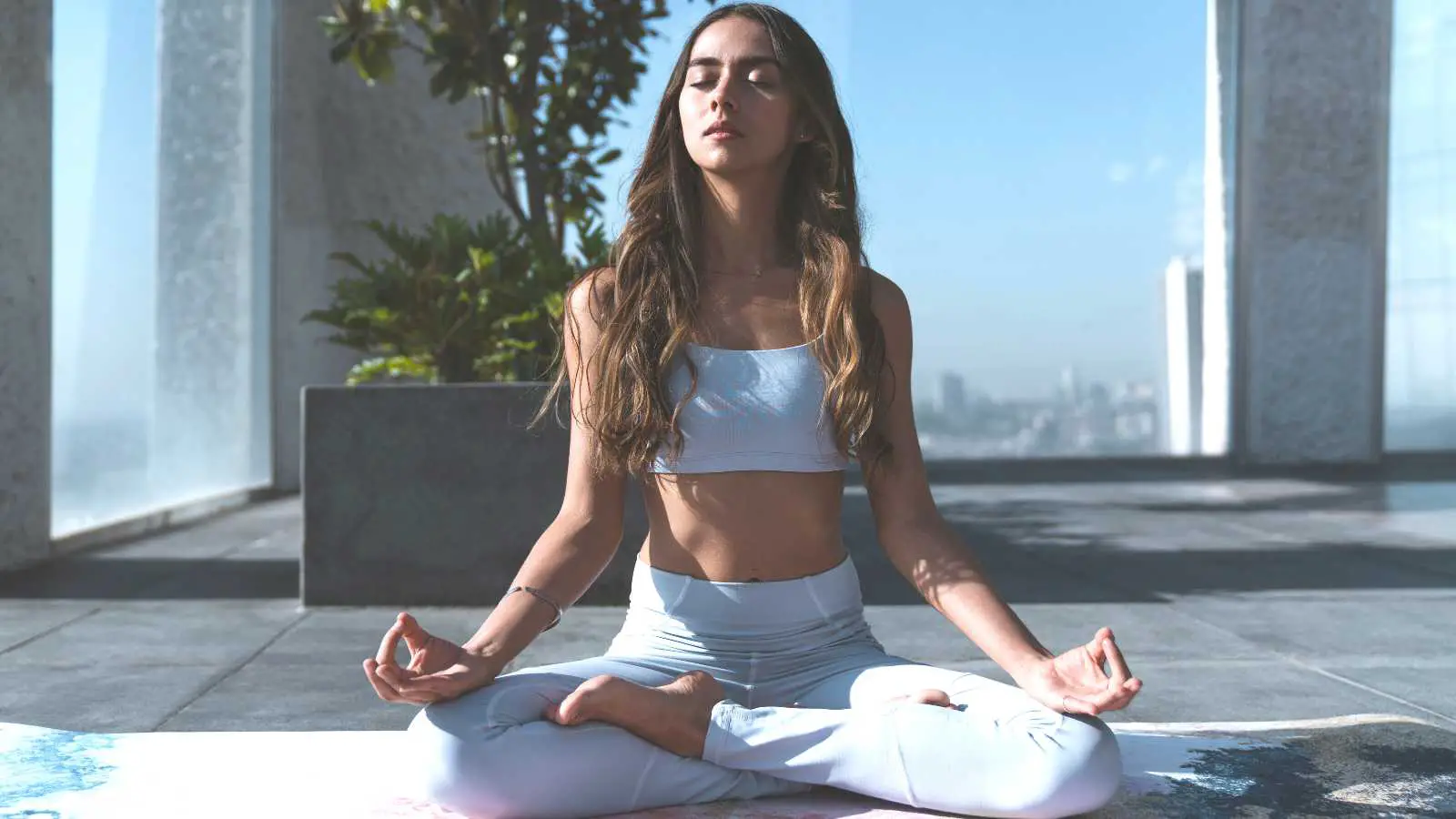Despite the many articles that have been written about meditation, the benefits of meditation, and how it can be incorporated into a daily routine, it is natural also to wonder what meditation is not.
Meditation is not a religion, a cult, or a way to achieve a certain level of consciousness. It is not a way to suppress thoughts or emotions, not a way to control the mind, but rather to observe and understand it. Additionally, Meditation is not a substitute for medical or psychological treatment.
Let’s cover the most discussed ones one by one:
1. Meditation is not a religion
One of the most discussed topics among people who turn to meditation is whether meditation is a religious practice. Meditation is not a religion, but it can be practiced by people of any faith or spiritual belief. In fact, many people who practice meditation have no particular religious or spiritual beliefs at all. Meditation is a practice that is used to bring a sense of calm and focus to the mind.
Meditation is a form of mindfulness practice that helps to cultivate self-awareness and reduce business in the mind. Based on scientific evidence, the mind can be trained to focus on a particular object or sensation through different types of meditation, breathing techniques, visualization, or body scanning.
Even though meditation is not a religion, it can be used as a tool for spiritual growth and self-discovery. Some people use meditation as a way to connect with a higher power or to explore their own spirituality, while people with a solid religious background already feel connected to the higher being.
2. Meditation is not a prayer
Meditation is not a prayer, although it can be used as a form of contemplative practice by people of any faith or spiritual belief. Meditation is a practice that is used to clear the mind and release tension, while prayer is a form of communication with a higher power or deity.
One of the main differences between meditation and prayer is the focus of the practice. Meditation typically involves focusing on a particular object or sensation, such as the breath, in order to bring about a sense of calm and clarity. In contrast, prayer typically involves communicating with a higher power or the Divine, expressing gratitude, asking for guidance, or making requests. Another key difference between meditation and prayer is the purpose of the practice. Meditation is typically used as a tool for self-awareness, while prayer – is for spiritual or emotional support and connection with a higher power.
While meditation and prayer are two different practices, they beautifully complement each other. Both can be used together to enhance spiritual and personal growth. People often use meditation to prepare the mind for prayer by bringing a sense of stillness. In return, prayer can be used as a practice to deepen the meditative state by expressing gratitude and asking for guidance.
3. Meditation is not an affirmation
It is interesting to note that meditation and affirmation have more similarities with each other than differences. While these two practices can be combined together to enhance the positive outcome, still, meditation and affirmation are different.
The fundamental goal of meditation is to bring the practitioner to a state of calmness, ease, and relaxation. This is achieved by regularly practicing one or a few types of meditation, observing the sensations in the body, and allowing the feelings to rise and just be.
On the other hand, the goal of affirmation is to “transform the negative feelings or thoughts into the positive ones” by deliberately repeating the same sentences until we start believing in the statement.
Affirmations “fight’ the negative beliefs, while meditation allows them to surface, stay there and wait until they dissolve in the emptiness of the mind.
4. Meditation is not a hobby
Although meditation can be an enjoyable and beneficial activity that we can incorporate into our daily routine, it is not a hobby. Meditation is a practice, and for some people, even the lifestyle, that is used to maintain inner balance, clear the mind, and calm down the nervous system. A hobby, on the other hand, is an activity that is done primarily for enjoyment or pleasure.
While many people find inner pleasure in meditating, it is not a leisure activity as a hobby but rather a practice that requires discipline and commitment. Meditation is a practice that requires regular and consistent effort to see results, while a hobby can be pursued as often as one desire.
5. Meditation is not solitude
One of the main differences between meditation and solitude is the purpose of the practice. Meditation aims at reducing stress and enhancing personal growth, while solitude, on the other hand, is often associated with feelings of isolation, loneliness, and disconnection from others.
Another key difference between meditation and solitude is the level of engagement with the external world. Meditation is a practice that might require engaging with other people (such as group meditations), while solitude often involves disconnecting from the external world intentionally.
It is interesting to observe, though, that different people have different views on the relationship between meditation and solitude. For example, meditation practitioners use meditation as a tool to find inner peace, connect with themselves and with the world around them (by practicing Loving Kindness Meditation), while others see it as a form of isolation.
6. Meditation is not a substitute for medical treatment
The main reason why meditation is not a substitute for medical treatment is that meditation teachers do not diagnose or treat specific medical conditions. Different types of meditation can be used, as complementary practices, to bring a sense of calm, while medical treatment involves the diagnosis and treatment of physical or mental health conditions by a qualified healthcare professional.
According to science, meditation can help manage stress and anxiety, manage chronic pain, and improve mental well-being. However, it is not a substitute for medical treatment and it may not be appropriate for certain individuals. People with certain medical conditions or mental health disorders may not be able to practice meditation at all, or may need to do so under the guidance of a healthcare professional.
If you are new to meditation or would like to incorporate it into your life but experiencing symptoms of a medical condition, consult with a qualified healthcare professional for a proper diagnosis and treatment plan. There are different types of meditation, from gentle ones that involve just breathing to more active ones that involve chanting. There is at least one that can fit anyone’s personal needs.
7. Meditation is not a substitute for sleep
Sleep is vital for our physical well-being. Sleep plays a crucial role in repairing and restoring the body, as well as consolidating memory and learning. When we sleep, our physical body is resting. Depending on the age and mental state, we might need 6 to 9 hours of sleep daily.
When we meditate – our mind is resting. Meditation finds its way to people who seek to improve mental health, release stress and anxiety, and improve sleep. Yes, to improve the quality of sleep. People with sleep disorders, or simply those who have difficulty falling asleep because of their busy minds, use yoga nidra meditation as an alternative to pills. Using medicine is always an option, but why not try something holistic first?
Sleep is a natural and essential biological process that is necessary for physical and mental health. The physiological and chemical reactions during sleep and meditation are different. While we can live our lives without meditation, unfortunately, we cannot survive without sleep.
8. Meditation is not controlling but observing
If you have ever attended a meditation class, you heard a teacher saying that the aim of meditation is to allow thoughts and emotions to come and go without getting caught up in them. You become an observer of your own thoughts and feelings rather than trying to control them.
Controlling means “engaging.” Observing means “allowing.” The fundamental goal of meditation is not to make the mind completely blank or free of thoughts but rather to develop the ability to observe what is happening inside your own body and mind objectively, non-judgmentally, and without getting caught up in them. It is not unusual for meditation beginners to try to change and suppress their thoughts during meditation because this is a new experience for them.
9. Meditation is not yoga
Meditation and yoga are related, but they are not the same thing. When we think about yoga, we envision a practice encompassing a wide range of physical, mental, and spiritual disciplines. It includes various postures (asanas) designed to improve physical strength, flexibility and balance the energies in the body.
However, Yoga is much much more than yoga poses combined in a nice flow. Yoga covers all aspects of life, including our diet, speech, thoughts, and actions. It is a philosophy of Life that dedicated practitioners incorporate into their daily lives through the eight limbs of yoga. It is called a Yogic Lifestyle.
Meditation, while also a practice, can hardly be called a Lifestyle. Meditation is only one component of the yogic lifestyle. In fact, it is one of the eight limbs of yoga and is regularly incorporated into the daily routine of those who live a truly yogic lifestyle.
While not widely known, the origins of yoga were rooted in the belief that by preparing both the body and mind, one can more easily achieve a state of peaceful and focused meditation. That’s why almost every traditional style of yoga has a short meditation incorporated as a part of the practice, for example, Savasana. While it is a yoga pose, the purpose of Savasana is to allow the body to observe the benefits of practice while the practitioner is in a meditative state.
Closing thoughts
Meditation can play a fundamental role in changing a person’s lifestyle, but yoga is not necessarily part of it, while yoga can be lived as a Lifestyle with meditation being a pillar practice. People may turn to yoga and meditation for different reasons: to settle down the busy mind, to release stress, and anger, to manage emotions, or to improve mental well-being. Both meditation and yoga train the mind to achieve a state of calm and focus and can be practiced independently from each other.





